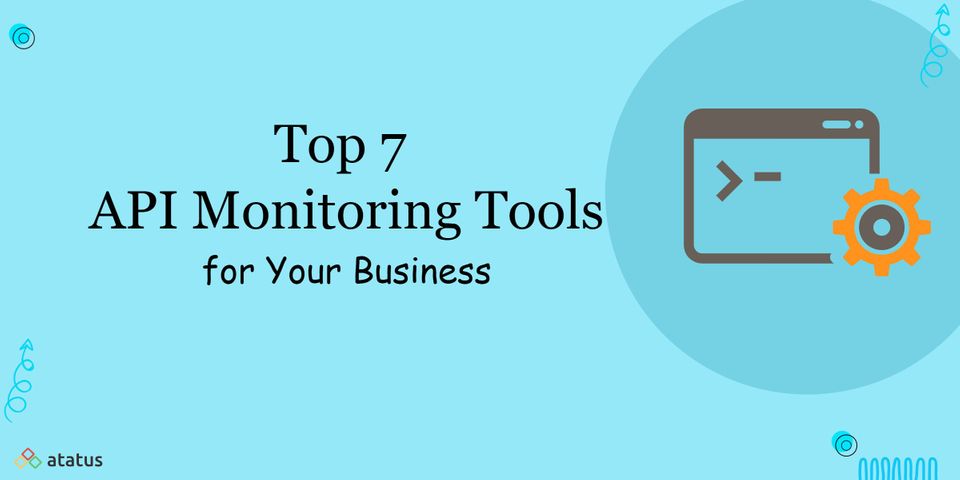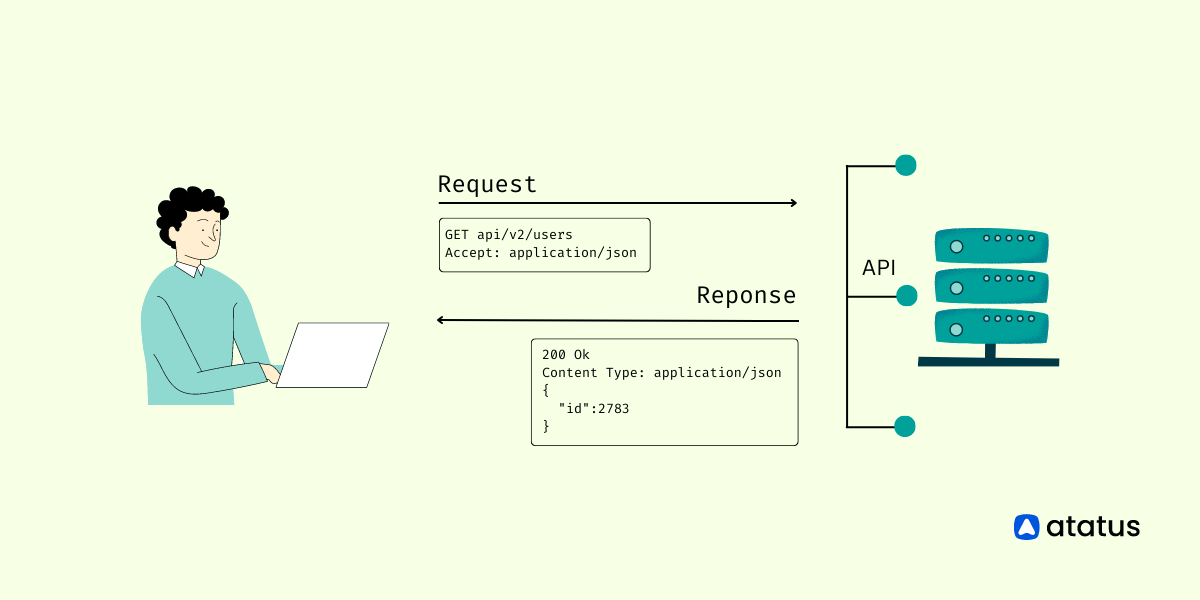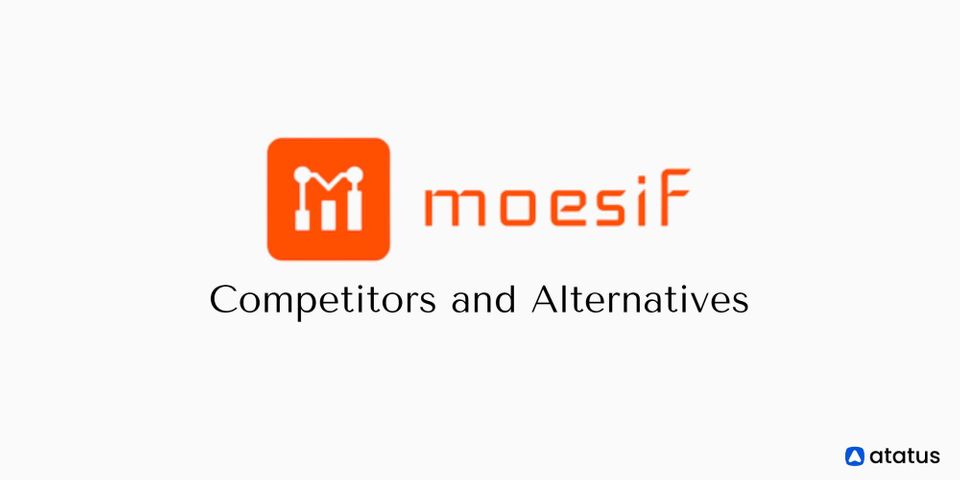Top 7 API Monitoring Tools for Your Business in 2025
As APIs are so important for connecting modern cloud applications, keeping an eye on their availability and speed is essential if you want to give a great user experience. A good API monitoring tool can assist you in developing dependable APIs by detecting and fixing issues before they reach your users.
If you're looking for a solution like this, look no further. In this article, we looked at some of the top API monitoring tools available today. We'll go into every nook and cranny, from strengths and weaknesses to pricing, to help you identify the best fit for your use case.
Here how it’s done:
- What is an API?
- Things to Look for When Choosing an API Monitoring Tool
- How do I monitor API logs? - 7 Best API Monitoring Tools
What is an API?
An application programming interface (API) is a collection of software development tools, subroutine definitions, and communication protocols. It is, in general, a set of well-defined communication ways between diverse components. A good API simplifies the development of a computer program by giving all of the necessary building components, which the programmer then assembles.
In simple terms, an API can be for a web-based system, operating system, database system, computer hardware, or software library.
APIs aren't just limited to web services. Operating system calls, database system interactions, hardware signals, and software libraries are all fall into APIs because they all have a well-defined, well-understood interface and protocol set.
Things to Look for When Choosing an API Monitoring Tool
Before you choose an API monitoring tool, it's crucial to understand the elements that go into making that decision. This list will assist you in organizing your selection criteria and making the best decision for your specific application.
- User-friendly
When you're monitoring hundreds of APIs, you have to think about how easy it is to use. To test a single API, write multiple different request payloads and repeat the process for the others. Managing all of those numerous testing situations can be difficult if your tool isn't user-friendly. - Price
There is a cost associated with the best tools available. You must examine the price tag and discuss it with your team in order to get an agreement on the pricing. Don't pay the bill right away because some tools have a trial period. Make use of it.
Start your 14-day free trial of Atatus. - Monitoring Dashboard
You'll want to verify the monitoring status and take action as soon as the tool discovers an issue. Monitoring productivity and visibility will increase if a monitoring tool gives an intuitive dashboard where you can monitor many APIs. You'll want to get alerts sent to your email or phone in addition to the visual support. - Scalability
Scalability is a must-have when you have to monitor tens or hundreds of APIs with the potential to grow. Ease of use and scalability may not always go hand in hand. Before making a final decision, take some time to see if you can grow with the tool you've chosen. - Team Collaboration
You're probably not alone in your team, and you'll want to share a monitoring tool update with your colleagues. An API monitoring tool must be able to support a collaborative environment that includes good account management and shared workspaces. You can use this tool to keep track of modifications made by colleagues and add comments to their work. - Security
You might want to interface with the APIs that handle essential processes and sensitive data using your monitoring tool. This is why security is so crucial because you don't want your APIs to be exposed to unauthorized third parties. You should not enable abnormal requests to hit your APIs for testing, in addition to access control. - Integration
A tool that is isolated from the rest of the world will not be able to thrive. Companies already have their own IT resources, and when they select a new tool, they want it to work seamlessly with their existing systems. Make sure to check if an API monitoring tool can communicate with your core resources before deciding on one. - Community Support
When selecting a monitoring tool for your company, you may not want to be an early adopter. It's difficult to locate beneficial advice and information on the Internet when a tool is a brand new to the market. In most cases, a lack of community support translates to a lower-quality product. Always check to see how extensively a tool is used and whether there are any readily available tips.
How do I monitor API logs? - 7 Best API Monitoring Tools
API monitoring tools are plenty on the market. Let's take a closer look at each of them and explore their core features.
#1 Atatus
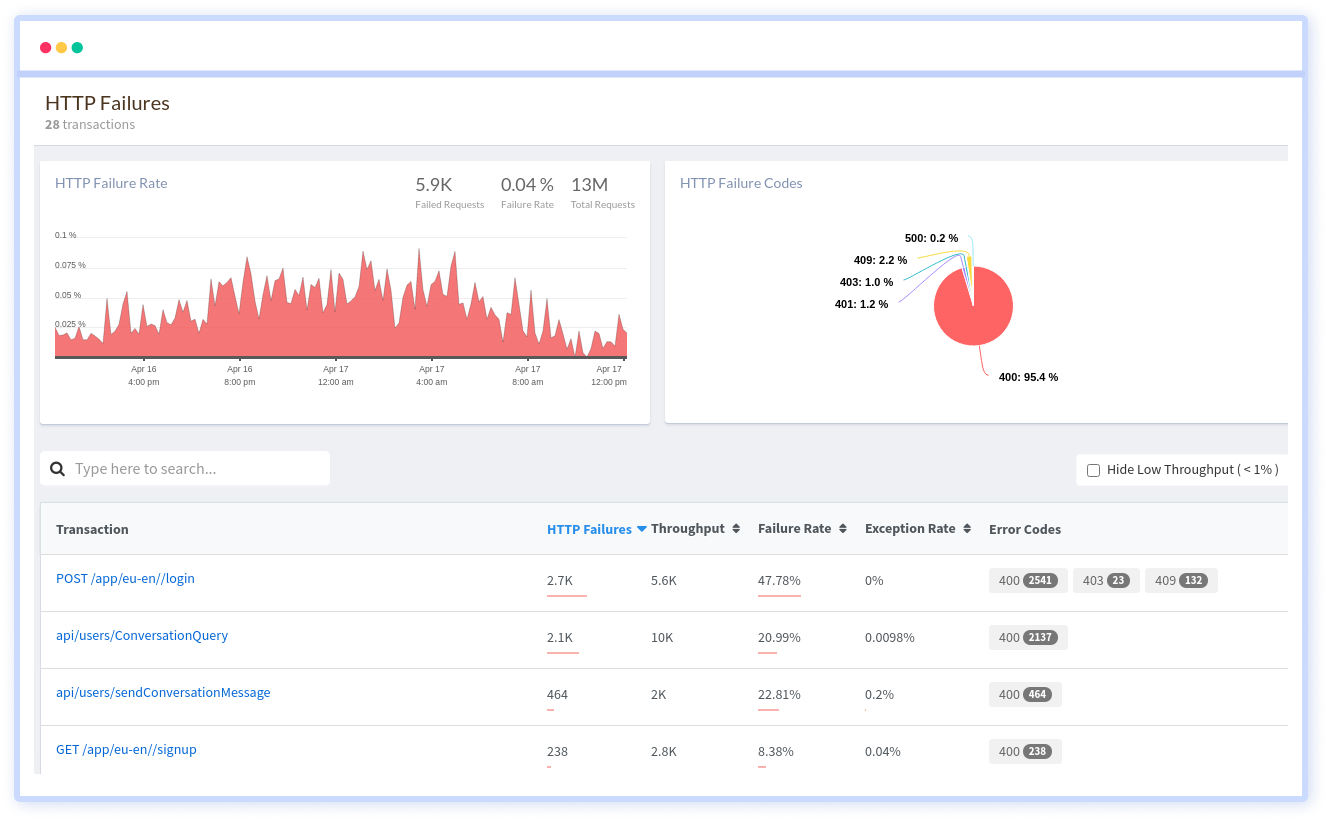
Atatus is one of the most effective monitoring tools available in the market. It records all requests made to your applications without forcing you to make any changes to your source code. You will get a clear picture of how your methods, database statements, and external requests affect your users' experience.
It monitors the performance of applications, browsers, and infrastructure. Atatus makes use of a RESTful API to see and get data. You must use certain API keys provided by Atatus to obtain data from either the application, browser, or infrastructure monitoring.
Authentication is required for all API queries in Atatus. You'll need to use secure HTTPS communication to send your queries. All other requests will be dismissed outright. To send us a legitimate API request, you'll need an API key. Reports API will offer you full information on any issues as well as your application's performance. This API can also be used with third-party dashboards.
Pricing:
The paid plan starts from $49/month. If you desire a plan with particular specifications. We can work with you to create a plan that meets your needs. Just talk to us. We love to hear from you.
Pros:
- Most affordable APM on the market
- UI is very easy to understand
- It delivers a detailed report on monitoring
- Easy to setup
- Integration is done super quick without any problems
#2 Sematext
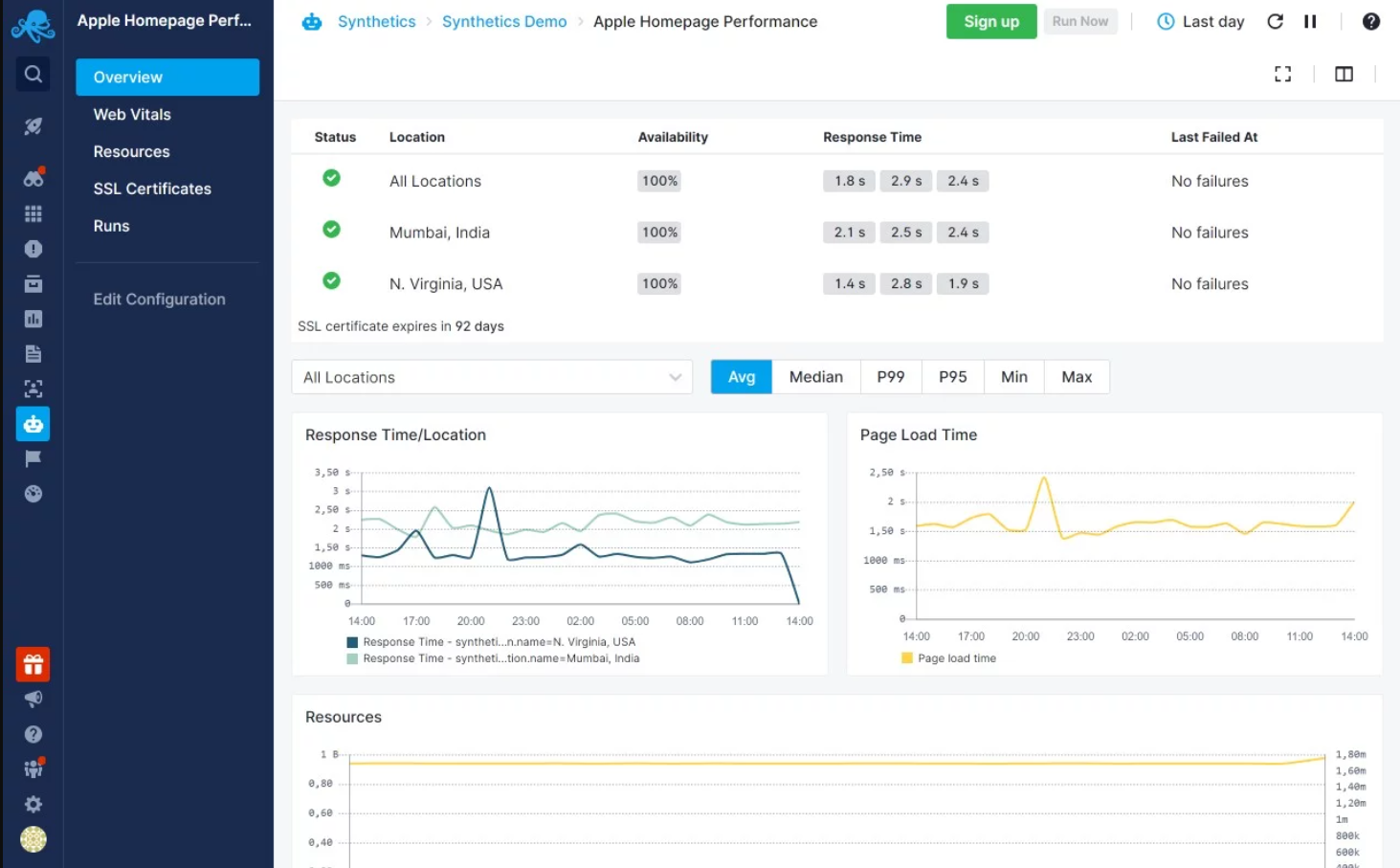
HTTP monitors are used by Sematext Synthetics to track API availability from various geo-locations. It is a simple API monitoring tool that is used to keep track of API uptime. This tool, unlike the others, does not provide in-depth log data, but it is very user-friendly.
You may also use Sematext Synthetics to create custom alerts that will be distributed to your Slack, email, and other accounts. The Sematext Cloud, which monitors the applications' backend, may easily be linked with this API monitoring tool. This combination may be useful for determining how the API and its backend perform while pinging from various geo-locations.
Pricing:
The paid plan starts from $0.007/hour. They also provide 14-day free trial and a free plan for 3 hosts (5 maximum).
Pros:
- Alerts that you can customize
- It's less expensive than the majority of API monitoring tools
- Provides data that is based on a user's location
Cons:
- If used individually, it lacks the functionality of other API monitoring tools
#3 AppDynamics
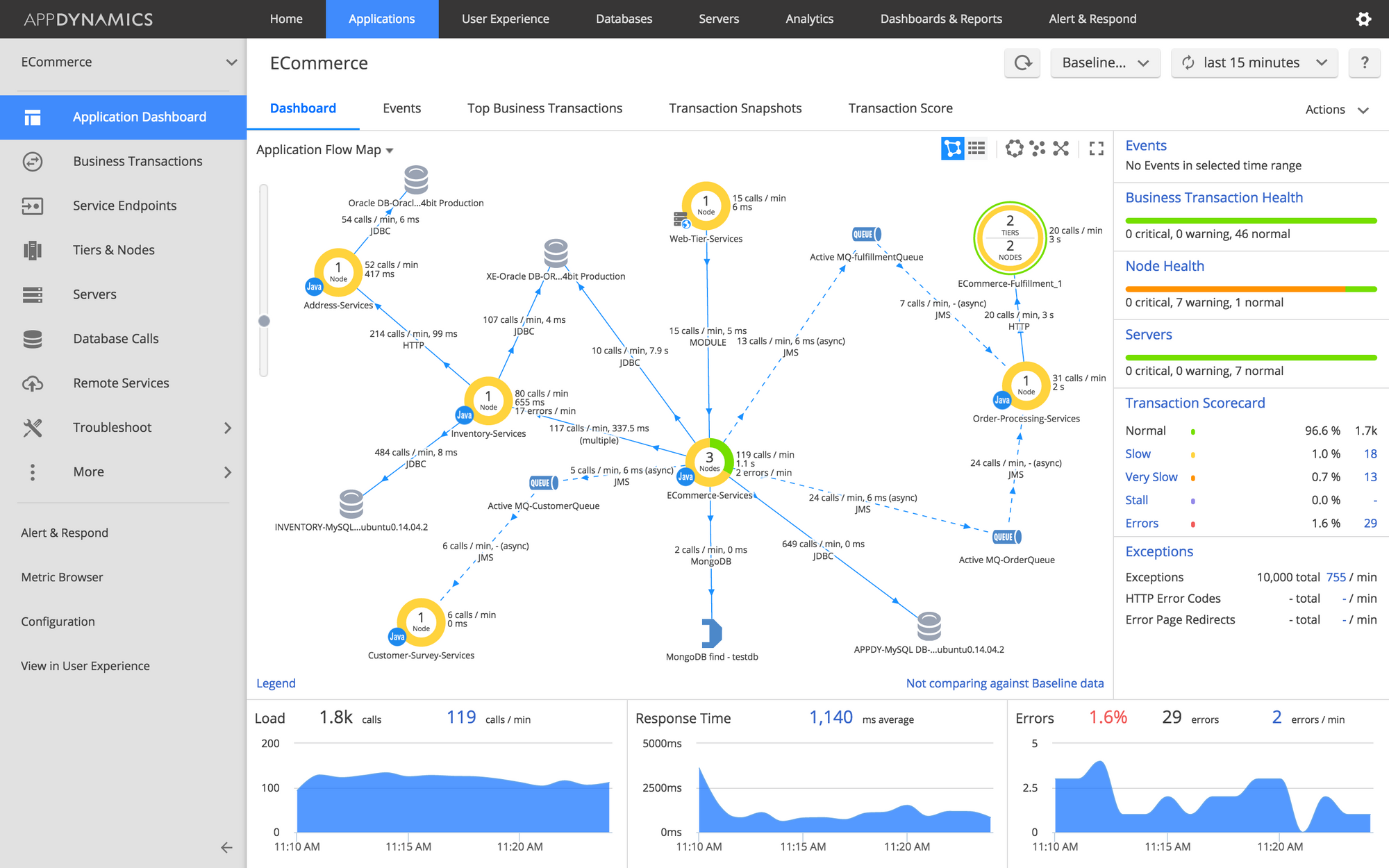
AppDynamics provides straightforward and simple real-time data visualization, allowing you to avoid user-impacting experiences with out-of-the-box monitoring solutions. With AppDynamics, you can be certain that your application or web service is ready to serve customers at any moment by using Selenium-based tests to measure your whole processes, including data and user activities.
With full resource waterfalls and page performance load times from the browser timing and navigation APIs, you'll be able to measure and track end-user experience as viewed by your customers, not some proxy metric. AppDynamics assists in determining the root cause of the problem and recommends potential solutions. It includes a unified monitoring system with data such as Browser Real User Monitoring, Mobile RUM, Synthetic Monitoring, Database Monitoring, and more.
Pricing:
You need to raise a quotation to know their pricing. Before that make use of their 15-day free trial.
Pros:
- Dashboards that are unique to you
- Microservices monitoring capability
- Reports should be scheduled
Cons:
- Expensive
- For small APIs, it could be overkill
#4 Uptrends
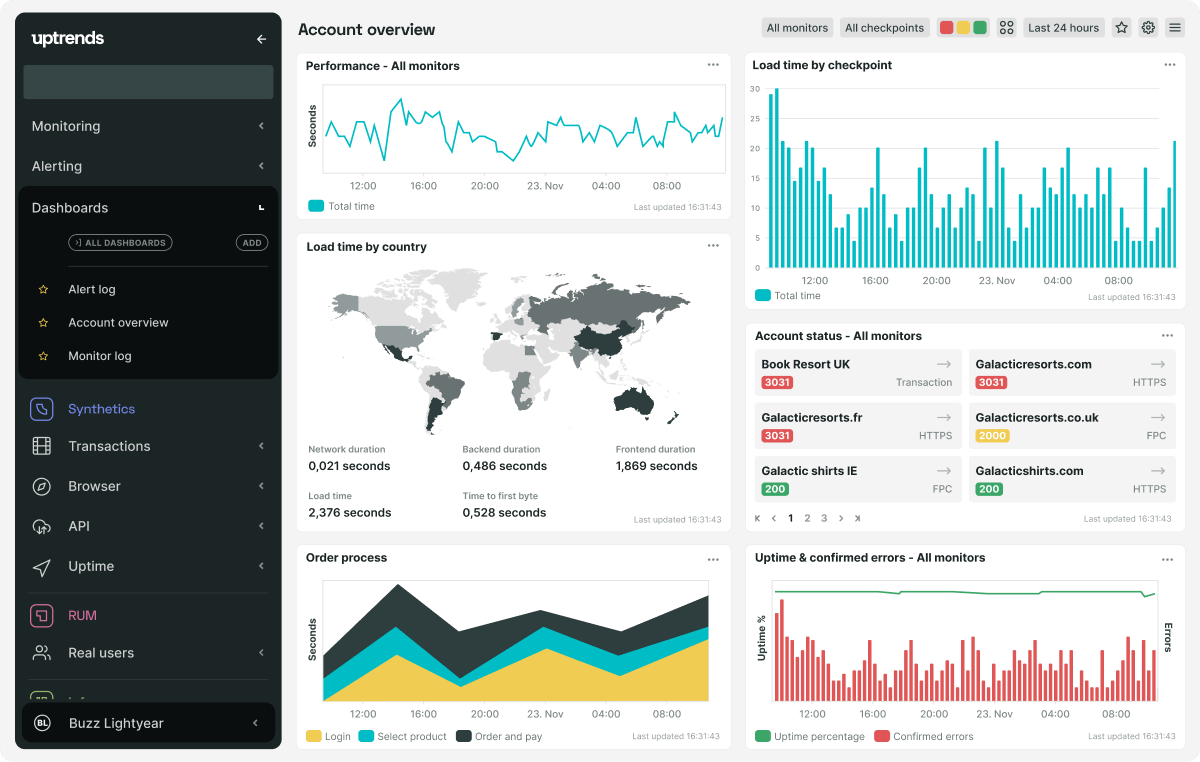
API monitoring from Uptrends offers a multi-step solution to test APIs for performance, functionality, and availability. It relies on a reliable alerting system that sends out a notification whenever something goes wrong.
Uptrends can monitor your API around the world and use private checkpoints to test your application and web services behind your firewall. These on-premise private checkpoints might be virtual machines or real servers that are used to monitor your intranet, web applications, and APIs with Uptrends checkpoint software.
Their multi-step monitoring technology allows you to create complex testing scenarios without needing to know how to code. It's simple to set up, and you get real-time alerts and personalized stats.
Pricing:
The paid plan starts from $21.59/month. Also, they provide a 30-day free trial.
Pros:
- It's an easy-to-use tool
- It is possible to monitor from many locations across the world
- A pre-configured, publicly available status page is offered at no additional cost
Cons:
- The user interface isn't very fantastic
- Customer service is lacking
- There are numerous features that can be harmful
#5 API Fortress
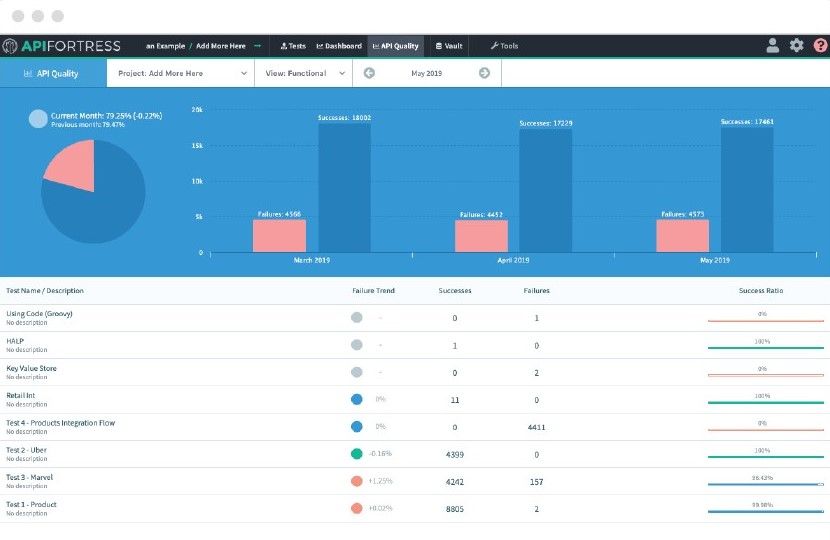
API Fortress is a bit of a hybrid in that it offers both a REST API monitoring and a comprehensive monitoring solution. It offers a lovely UI that lets you quickly test payloads, API traffic subsets, and more. Using both services will provide an additional layer of assurance in terms of avoiding downtime and other difficulties.
It will enable you to check data in real-time and share time-sensitive and vital information with your entire team, all while maintaining a data history for SLA compliance. SOAP, REST, XML, JSON, and a variety of other technologies are supported by API Fortress. With customizable cloud deployment options, sophisticated API debugging tools, and data-driven testing capabilities, API Fortress is one of the most feature-rich solutions available.
API Fortress promotes companies to simplify continuing API quality, allowing developers and testers to reduce risk while reducing time to market.
Pricing:
The pricing is based on the number of seats. They provide a 30-day free trial before you purchase.
Pros:
- The ability to produce code automatically is advantageous
- User-friendly UI for testing and customizing API Fortress for essential data at the same time
- It delivers a comprehensive report on API testing
Cons:
- For small teams, API Fortress can be prohibitively expensive.
- The cloud users do not have access to all of API Fortress's features.
- It's not easy to use API Fortress to test local APIs (requires running an agent)
#6 Postman
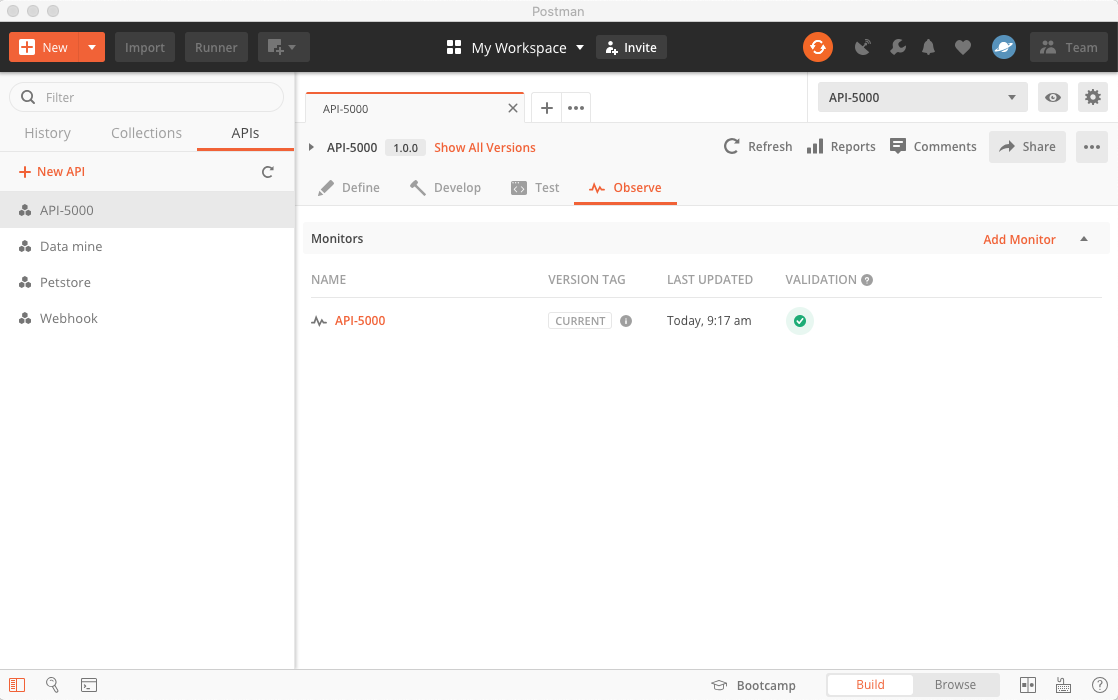
Postman is one of the most widely used API monitoring tools. It comes with a few options for running and monitoring API tests. You can use Newman or the Collection Runner to test API calls locally. Most clients, on the other hand, are likely to prefer utilizing a Postman monitor. This uses Postman's cloud to execute the API collection.
Each monitoring instance (probably for each API) is referred to as a monitor by Postman. Postman monitors can only connect to endpoints that are publicly accessible. You can run collections in the cloud, view, and plan API requests per collection if you have access to the Postman cloud. The results may then be filtered and graphs showing response time for each test can be viewed.
The ability to create a compilation of integration tests is perhaps the tool's most significant feature. Postman provides access to the command-line tool, the Postman API, the API Network, and integrations.
Pricing:
They provide a free plan to start designing, developing and testing APIs. Their paid plans start from $15/month.
Pros:
- It's simple to set up and utilize
- With just a few clicks, you can build, import, and export API collections
- It provides a fantastic platform for writing software automated tests
- It's simple to swap between multiple modes, such as JSON and XML
Cons:
- Limited to REST API Testing, the software may roll back the changes on its own
- There is no support for the Hessian protocol
- It is not possible to test multiple APIs at the same time
#7 Dotcom-Monitor
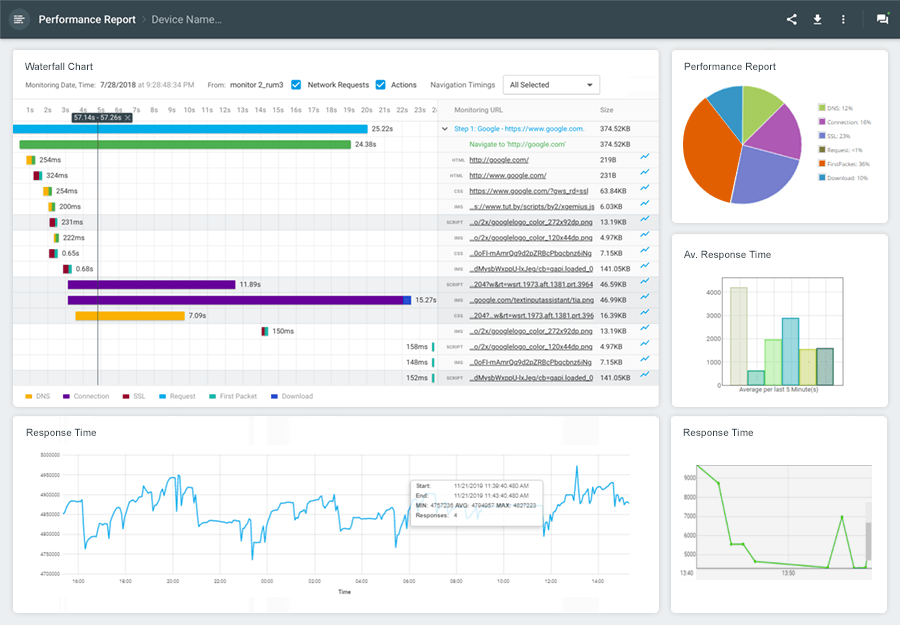
You can use Dotcom-Monitor to keep track of the functionality, availability, and performance of your API web services. Twenty-five distinct locations and seven different browsers will be used in your tests. It's relatively simple to set up. You may test the content, performance, and uptime of a REST or SOAP web service by calling a specific web function.
If you've been using Postman, you may use the Postman Collection Task to import your calls from Postman right into dotcom-monitor. You'll be graded on your load time and given details on your server responses when you complete the test.
When it first launched, it just offered API monitoring, but later on, further features such as load testing and real-time monitoring were introduced. You can also create custom alerts for downtime and performance issues. With the help of browser emulation, Dotcom-Monitor may also be used for website testing.
You'll also be able to see what a repeat visit looks like for someone who visits your website for the second time and already has cached resources on their system.
Pricing:
The paid plan starts from $19.95/month. They also provide a 30-day free trial.
Pros:
- It's quite simple to use
- A wide range of monitoring is available
Cons:
- The setup is difficult
Finally!!!
In this article, we've gone over some of the most popular API monitoring tools. We offered alternatives for everyone, from DevOps to engineers, product managers, and business owners, regardless of whether they require a basic service or something more advanced. The tools can assist you in a variety of ways; for example, you can use some to do load testing or even debug a backend issue.
Atatus specializes in monitoring systems, which includes APIs. Our software can be used to acquire in-depth knowledge of your settings with minimal configuration. If you'd like to learn more, schedule a demo with us or sign up for a 14-day free trial right now.
#1 Solution for Logs, Traces & Metrics
APM
Kubernetes
Logs
Synthetics
RUM
Serverless
Security
More

